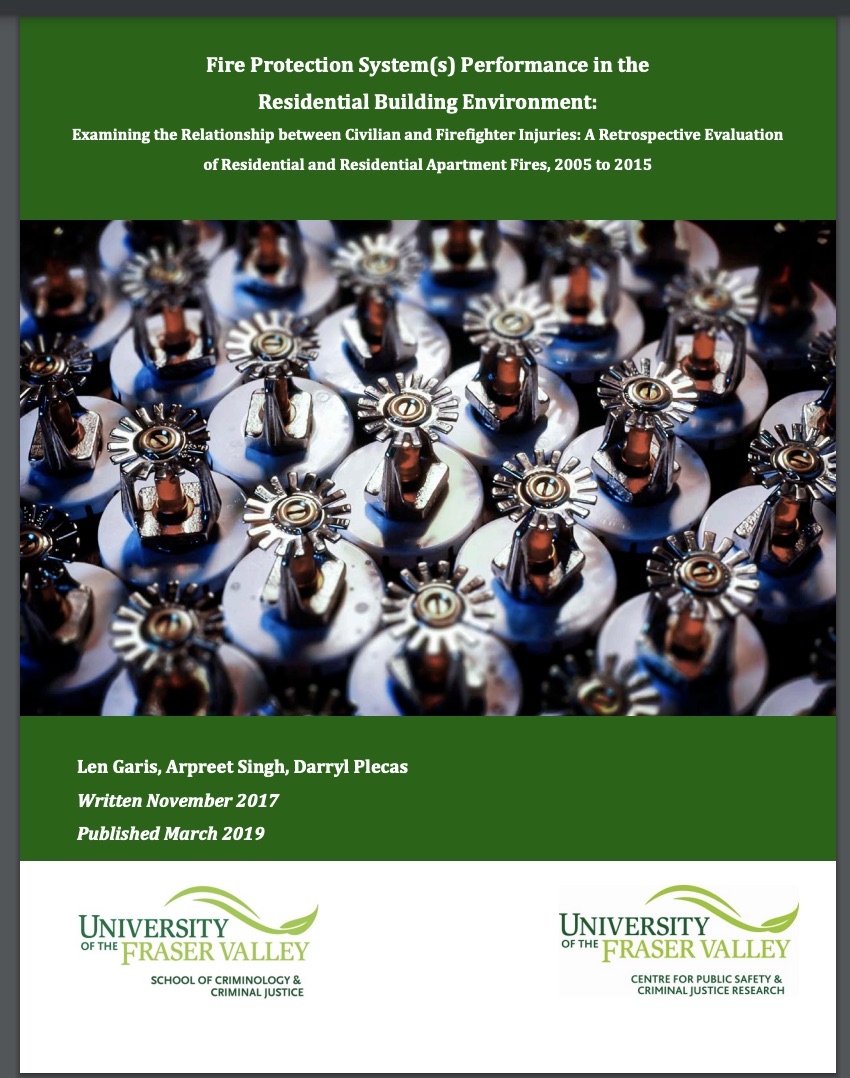Although we are all familiar with the lifesaving benefits of fire sprinklers, we do not spend too much time reviewing the reduction in injuries that these systems also provide. The advantages are many and injury reduction shouldn’t be overlooked.
Several recent Canadian studies have highlighted these benefits, from reducing the rate of injuries, to their severity, to reducing firefighter injuries. In 2016, the Sunnybrook Health Sciences centre, a leading burn research institute, released a report on burn injuries in Ontario from 1995 to 2012. They found that the initial average hospital cost of treating a burn injury was $84,678. This resulted in a direct cost to the province of $96 million. But when indirect costs were considered, such as rehabilitation, transportation, property loss, etc., these costs ballooned to $3.6 billion. This study only reviewed those instances when there were hospitalizations. It did not consider the number of fires where sprinklers functioned as they were designed to do and either extinguished the fire or gave the family time to escape uninjured.
The 2019 University of Fraser Valley report Fire Protection System(s) Performance in the Residential Building Environment reviewed working fires in the province of BC from 2005 to 2015. They reported that overall, death and injury rates per 1,000 fires were significantly lower in buildings protected by residential fire sprinkler systems. Civilian injury rates were lowest in the presence of sprinklers. Severity of the fire injuries (hospital stays over three days or more) were significantly less when sprinklers were present.
The above reports shed an important light on these benefits to Canadians and they reflect similar trends in the US as reported in the NFPA’s Sprinkler Impact on Fire Injuries 2012. This report found civilian injuries were reduced by 41% when sprinklers were present, medical costs were reduced by 53%, and firefighter injuries were reduced by 65%.
When we review the entirety of the benefits of fire sprinklers: prevention of lives lost, injury reduction, rehabilitation costs, safety of firefighters, property loss reduction, and reduced environmental impact, we can see how essential installed sprinklers are. These systems need to be considered when we design new communities. Families should be granted the opportunity to choose these systems for a lifetime of protection.

